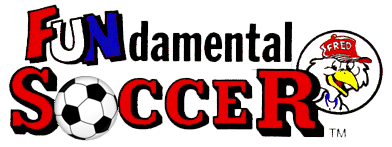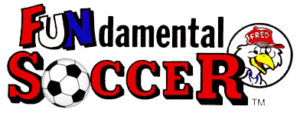The ‘Love for Playing Soccer’ is instilled into youth worldwide who play (*) games during and between practices?
*Age-appropriate games, i.e., Red Light Green Light
vs.
*Ability-appropriate games, i.e., 1 vs 1 & small-sided games
Let the discussion begin…

To me, Age-appropriate and Ability-appropriate ideas are not oppositional. Training can be both. Children enjoy their peer groups. Children also enjoy being challenged.
When the premise is framed as oppositional- it implies a conflict that does not have to exist.
As coaches- our job is to encourage them in their journey with soccer. Every child is unique. AND statistically, every child fits somewhere on a bell curve of Ability based on a certain task.
Our magic as coaches shines through when we can give a group of players age-appropriate games to provide the psycho-social support our players need while at the same time adjusting the parameters of the play for individual player needs (skill). i.e.
Limiting touches for the upper end of the bell curve- unlimited touches for the lower end.
These adjustments are made as requests- privately and individually as the practice or game progress. Suppose the player says “No” to the request. In that case, that is OK- it just means they lack confidence in themselves or your judgment (as coach) because of a lack of connection or experienced success.
The request builds a connection between player and coach.
Every player gets their “instruction” Every player is included in the “secret sauce” recipe for them. – This can be done at any age- U-6 to U-18.
The important part is it needs to be challenging and yet achievable.- even if the achievement is incremental. Request- only use your non-dominant foot. The player only used it a handful of times. That’s OK. The player made an effort- acknowledge it. There will be greater effort. Please ignore it and watch it drift into the wind.
Be careful- heaping false praise undermines the relationship.
Do NOT tell the player what you saw- Ask them how they felt they did- ask them what their plan is for next time- ask them what they can be proud of from training today.
The instructions can work on both sides of the ball for older age groups- offensive and defensive. Defensive adjustments might be – Can you influence your opponent to use their non-dominant foot? Can you force your opponent to take a long touch and give you the ball by impeding? Or pretending you are going in for a tackle- just to back away and adjust your position for a different defense angle. In the hopes that a long touch will put the ball at your feet?
As a coach for the last 15 years, a player for over 40, and a teacher of at-risk youth. We cannot control when a player understands a concept when players find joy in the struggle to get better together. Age-appropriate shows players the fun.
The excelling players can be individually challenged by complexity, such as non-dominant footwork. Limiting touches and looking for openings in the run of play- of the games.
When players are dominant- have them play up. Move to a higher age. Increase the challenges require stretch and growth.
“Play hard, Have fun, Do it because you love it!” – Skye Brown, a 9-year-old professional skateboarder.
When we only focus on play hard- we are focused on winning the game- not the player.
When we win the player, the games will follow- the journey will not end.

Koach Karl’s Notes:
I believe that a healthy exchange of ideas, such as presented in my article entitled, “A Practice Routine that Works,” helped in dramatically improving youth players and their playing environment in the past!
Now, Please help resolve a debate that started in 2004 …
*Age-appropriate games, i.e., Red Light Green Light, Sharks & Minnows, etc.
-or-
*Ability-appropriate games, i.e., 1 vs 1 & small-sided games
Which games do you believe should be prioritized in the curriculum for youth coaches, and Why?




